Simplicity Coimbatore ,Trash cooking
The awareness about food has been catching on like wildfire in recent years.Everywhere we go,there’s an opinion, a curiosity and an interest to experiment with food and to experience and be exposed to as many culinary food journeys as one possibly can!
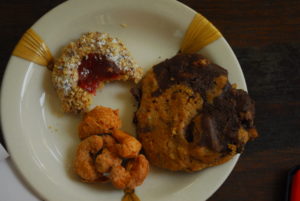
It’s an exciting time to be a foodie. Ingredients are delivered as if by magic right to the doorstep from half way around the world. Children are eager to start cooking from a very young age and feel mighty pleased at being able to pronounce fancy names even with the lisp brought upon by recently fallen milk teeth.
However there is a flip side to all of this. Chefs across the world were the first to notice this alarming problem. Talk to any conscious restaurateur and they will agree that there is excess waste generated in kitchens. With demands rising and agricultural land decreasing, ingredients are having to be ‘supplied’ at a hectic pace. Farmers are forced to pull every bit out of their land with no regard to seasons, topography, or what their soil can and must grow.
With an overflow of ‘global’ produce,there is also a lot going to waste.This waste that is thrown out of our homes is ending up in landfills and incinerators. Those who can afford it buy in excess (at escalating costs) and the people who can’t ,end up going hungry!
Ironically hunger continues to be a very real problem in all corners of the world. Organisations like “No food waste” are working tirelessly to ensure that any excess of cooked food at homes and functions is quickly packed and made available to those less fortunate. But what about the waste generated from un-cooked food?
Today , we see every bin at the corner of the road brimming with garbage from the kitchen. We only think about what is bio degradable and what isn’t. But it’s a lot more serious than that. When food waste goes to a landfill,it breaks down into methane which we all know is a potent greenhouse gas leading to global warming. So the blame is not on industry and vehicular fumes alone, the dangers of food waste is also something to sit up and take notice of.
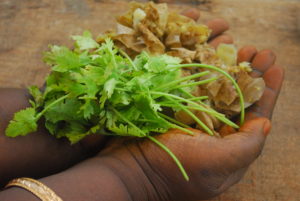
The world’s best culinary masters have conjoined a term called “trash cooking”. It may sound a little off putting at first but if we think about it, this is exactly the way our ancestors cooked. Every part of the plant from top to tail , root to shoot was used in an innovative manner to feed large families.Wholesome ,delicious meals were cooked using all parts of the fresh produce growing in the garden. A kai kari mandi or kadambam chutney are prime examples of making the best of what vegetables were remaining at the end of the week. Tamarind pulp residue and lemon peels were used for scouring dishes and they continue to do a better job than any commercial scouring powder. Even when cooking meat and seafood,little was wasted. Prawn shells are delicious when fried,almost like eating shrimp popcorn or even to make a prawn oil;so may possibilities.
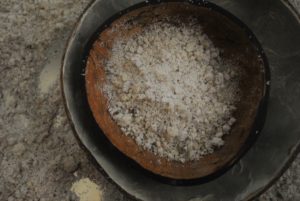
Coconut residue
Let me give you a few simple examples of how we can reduce waste.We make coconut milk at home,the residue which is left over does not need to be thrown in the bin.It can be dried in the oven or the sun, made into a fine powder and can be used for baking or for thickening gravies. It’s the same for most nut residue. The shavings left behind after making peanut oil in a home press is actually so tasty and crunchy that it can be served as a snack. Mushroom stems instead of being discarded can be chopped up and used as a stuffing along with herbs and onions.Leaves from organically sourced vegetables can be used in a myriad different ways. Crispy cauliflower leaves are so tasty. Stale bread can be toasted and powdered to use as dry breadcrumbs.
We love using coriander stems in our cooking,they give such an intense flavour.But so many people discard it in the bin.They can be used to grind into a chutney or used for flavouring rasam , soup or used to flavour dips.
If we actually put our minds to it, peels, rinds and leaves come in so useful.Recently an apex member of Siruthuli had a demonstration on how to make bio enzymes for cleaning the home using lemon and orange peels.
Orange peels are also used to make a face scrub. All it needs is to be dried in the sun and powdered.Not only are we making a difference by cutting down on the waste generated by each household, we also end up using a lot less chemicals for our home and health.
Take the instance of over ripe bananas. People are so quick to throw them in the trash at the first sight of the skin turning a darker colour.When I first stopped our kitchen helper from throwing it, she was most astonished.After seeing and tasting ripe banana bajji,banana pancakes and a kerala style banana dosa,she tells me that she’s become quite adept at turning leftovers into special treats for her family. An overripe banana when frozen comes in handy when making puddings and smoothies. An avocado,chocolate pudding with frozen bananas as a natural sweetener was one of the best desserts we made at home !
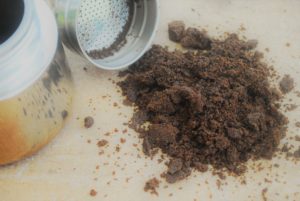
Coffee grounds
From using coffee grounds to make crisps and potato peels to flavour icecreams, cooks are getting creative with a purpose. While these ideas may seem bizarre it does open up a thought process to endless possibilities as to how we can put scraps and bits to good use.Every part of produce is packed with flavour. Food waste is increasingly becoming an international problem.We as a community must find a way to deal with it.
There are so many ways where each home can work towards generating as little waste as we possibly can. Most metros and towns have a thriving group of kitchen garden enthusiasts who in turn have motivated so many to follow suit.Turning kitchen waste into compost is a wonderful way of cutting back on un-cooked food waste.
There’s a lot of information available online about trash cooking. The change however must begin with us. Not wasting food ensures that there’s plenty to go around for all. This growing problem is for us to tackle both individually as well as collectively and it’s time we did !
Check out the links below and be part of a global movement
One man’s trash is another man’s treasure
To avoid food waste
Buy only as much as you need or will consume
Plan menus around the fresh produce which you buy
Kitchen waste composting is easy
Educate yourself to make the best use of food scraps
Make avoiding food waste a daily priority

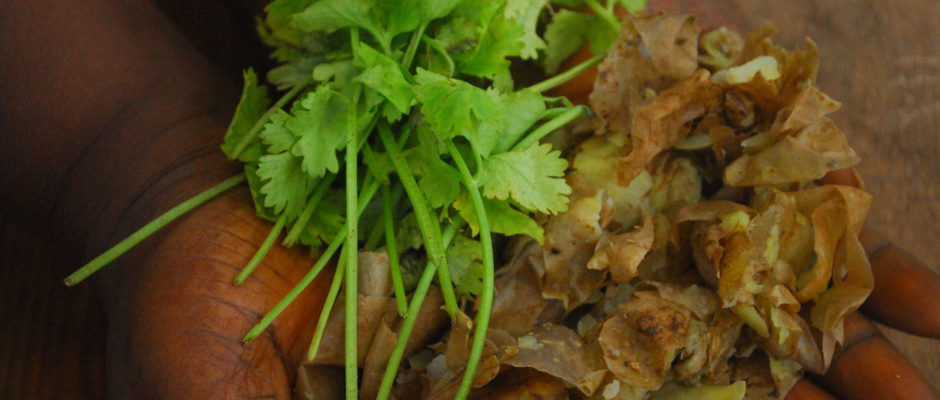
Very interesting Shanthini. Will try it at home:-)
Thanks Nitiya 😊